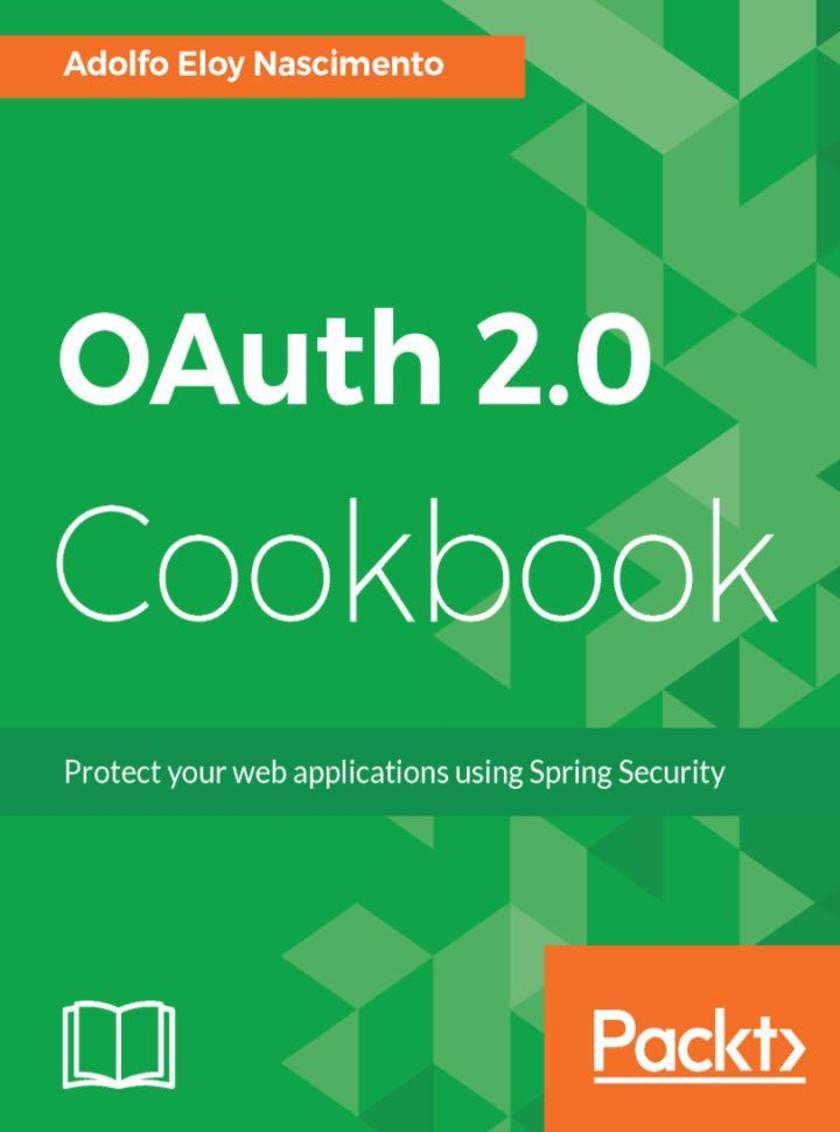
OAuth 2.0 Cookbook
¥80.65
Efficiently integrate OAuth 2.0 to protect your mobile, desktop, Cloud applications and APIs using Spring Security technologies. About This Book ? Interact with public OAuth 2.0 protected APIs such as Facebook, LinkedIn and Google. ? Use Spring Security and Spring Security OAuth2 to implement your own OAuth 2.0 provider ? Learn how to implement OAuth 2.0 native mobile clients for Android applications Who This Book Is For This book targets software engineers and security experts who are looking to develop their skills in API security and OAuth 2.0. Prior programming knowledge and a basic understanding of developing web applications are necessary. As this book's recipes mostly use Spring Security and Spring Security OAuth2, some prior experience with Spring Framework will be helpful. What You Will Learn ? Use Redis and relational databases to store issued access tokens and refresh tokens ? Access resources protected by the OAuth2 Provider using Spring Security ? Implement a web application that dynamically registers itself to the Authorization Server ? Improve the safety of your mobile client using dynamic client registration ? Protect your Android client with Proof Key for Code Exchange ? Protect the Authorization Server from invalid redirection In Detail OAuth 2.0 is a standard protocol for authorization and focuses on client development simplicity while providing specific authorization flows for web applications, desktop applications, mobile phones, and so on. This book also provides useful recipes for solving real-life problems using Spring Security and creating Android applications. The book starts by presenting you how to interact with some public OAuth 2.0 protected APIs such as Facebook, LinkedIn and Google. You will also be able to implement your own OAuth 2.0 provider with Spring Security OAuth2. Next, the book will cover practical scenarios regarding some important OAuth 2.0 profiles such as Dynamic Client Registration, Token Introspection and how to revoke issued access tokens. You will then be introduced to the usage of JWT, OpenID Connect, and how to safely implement native mobile OAuth 2.0 Clients. By the end of this book, you will be able to ensure that both the server and client are protected against common vulnerabilities. Style and approach With the help of real-world examples, this book provides step by step recipes for troubleshooting and extending your API security. The book also helps you with accessing and securing data on mobile, desktop, and cloud apps with OAuth 2.0.
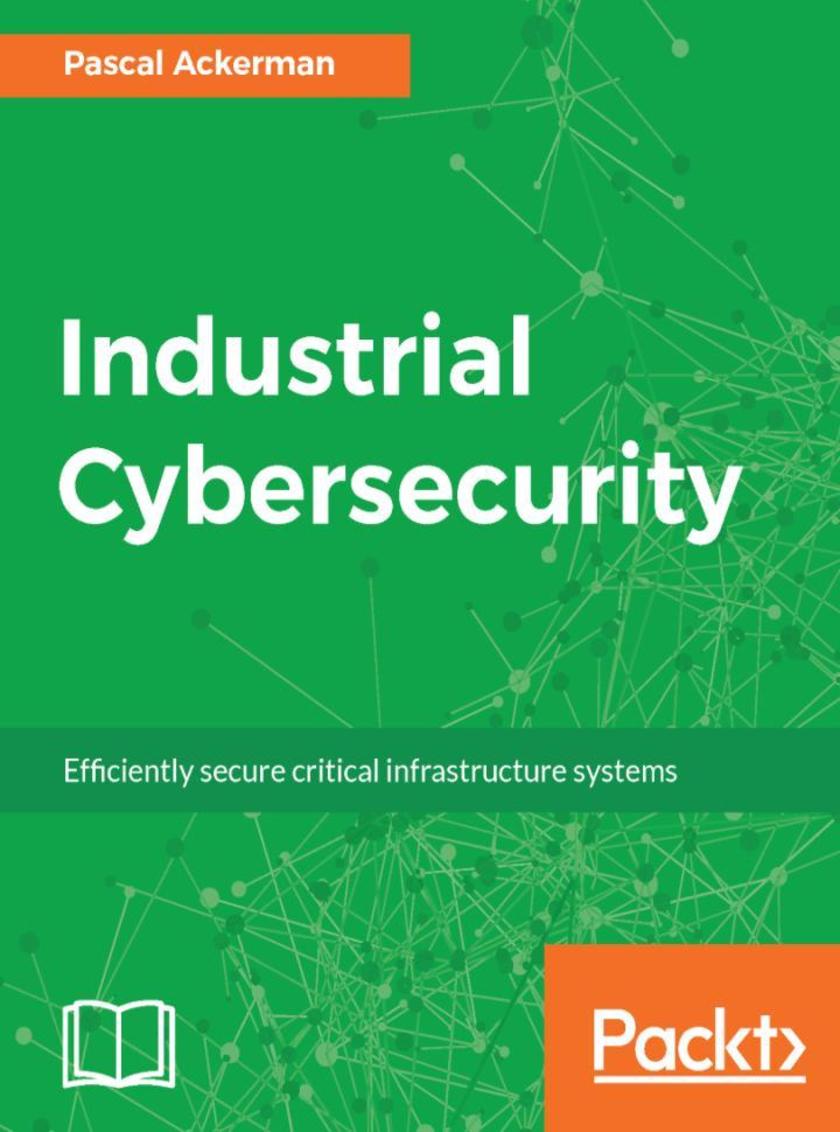
Industrial Cybersecurity
¥80.65
Your one-step guide to understanding industrial cyber security, its control systems, and its operations. About This Book ? Learn about endpoint protection such as anti-malware implementation, updating, monitoring, and sanitizing user workloads and mobile devices ? Filled with practical examples to help you secure critical infrastructure systems efficiently ? A step-by-step guide that will teach you the techniques and methodologies of building robust infrastructure systems Who This Book Is For If you are a security professional and want to ensure a robust environment for critical infrastructure systems, this book is for you. IT professionals interested in getting into the cyber security domain or who are looking at gaining industrial cyber security certifications will also find this book useful. What You Will Learn ? Understand industrial cybersecurity, its control systems and operations ? Design security-oriented architectures, network segmentation, and security support services ? Configure event monitoring systems, anti-malware applications, and endpoint security ? Gain knowledge of ICS risks, threat detection, and access management ? Learn about patch management and life cycle management ? Secure your industrial control systems from design through retirement In Detail With industries expanding, cyber attacks have increased significantly. Understanding your control system’s vulnerabilities and learning techniques to defend critical infrastructure systems from cyber threats is increasingly important. With the help of real-world use cases, this book will teach you the methodologies and security measures necessary to protect critical infrastructure systems and will get you up to speed with identifying unique challenges.Industrial cybersecurity begins by introducing Industrial Control System (ICS) technology, including ICS architectures, communication media, and protocols. This is followed by a presentation on ICS (in) security. After presenting an ICS-related attack scenario, securing of the ICS is discussed, including topics such as network segmentation, defense-in-depth strategies, and protective solutions. Along with practical examples for protecting industrial control systems, this book details security assessments, risk management, and security program development. It also covers essential cybersecurity aspects, such as threat detection and access management. Topics related to endpoint hardening such as monitoring, updating, and anti-malware implementations are also discussed. Style and approach A step-by-step guide to implement Industrial Cyber Security effectively.
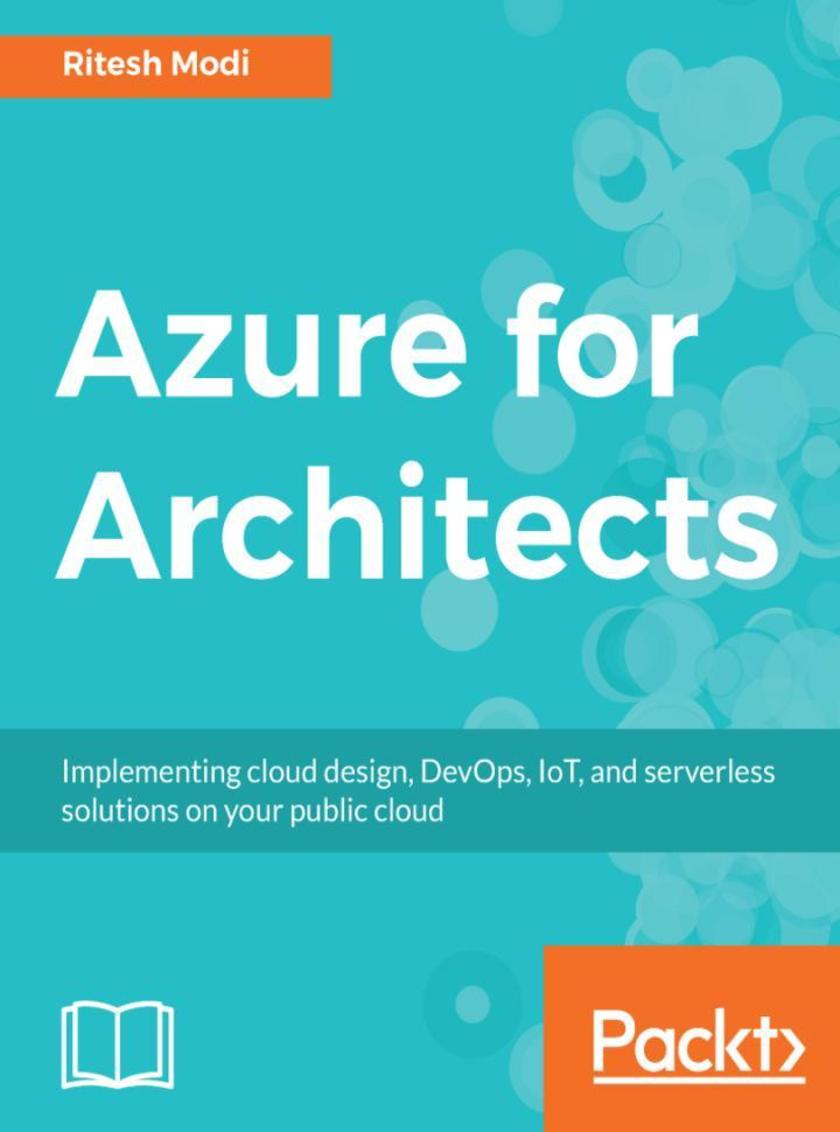
Azure for Architects
¥80.65
Your one stop guide to making the most out of Azure Cloud About This Book ? Get familiar with the different design patterns available in Microsoft Azure ? Develop Azure cloud architecture and a pipeline management system ? Get to know the security best practices for your Azure deployment Who This Book Is For If you are Cloud Architects, DevOps Engineers, or developers who want to learn key architectural aspects of the Azure Cloud platform, then this book is for you. Prior basic knowledge of the Azure Cloud platform is good to have. What You Will Learn ? Familiarize yourself with the components of the Azure Cloud platform ? Understand the cloud design patterns ? Use enterprise security guidelines for your Azure deployment ? Design and implement Serverless solutions ? See Cloud architecture and the deployment pipeline ? Understand cost management for Azure solutions In Detail Over the years, Azure cloud services has grown quickly, and the number of organizations adopting Azure for their cloud services is also gradually increasing. Leading industry giants are finding that Azure fulfills their extensive cloud requirements. This book will guide you through all the important and tough decision-making aspects involved in architecturing a Azure public cloud for your organization. The book starts with an extensive introduction to all the categories of designs available with Azure. These design patterns focus on different aspects of cloud such as high availability, data management, and so on. Gradually, we move on to various aspects such as building your cloud structure and architecture. It will also include a brief de*ion about different types of services provided by Azure, such as Azure functions and Azure Analytics, which can prove beneficial for an organization. This book will cover each and every aspect and function required to develop a Azure cloud based on your organizational requirements. By the end of this book, you will be in a position to develop a full-fledged Azure cloud. Style and approach This hands-on guide to the Azure Cloud platform covers different architectural concepts and implementations necessary for any enterprise scale deployment.
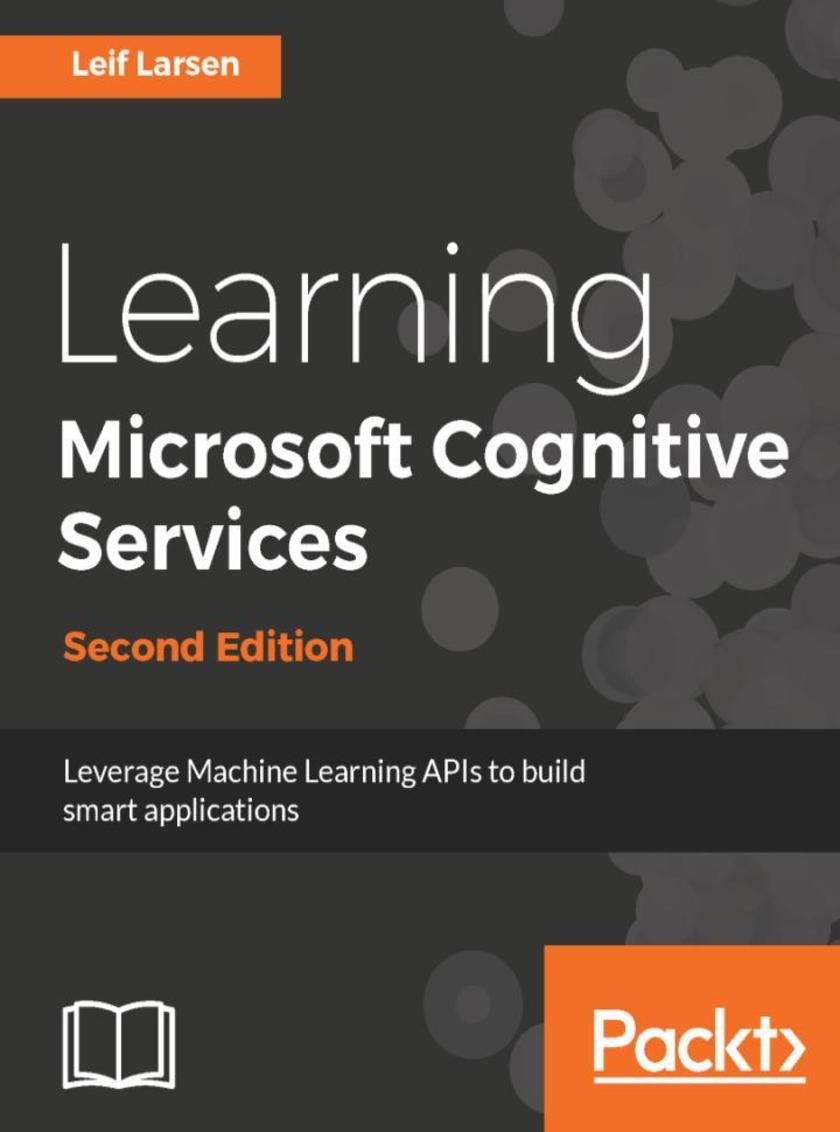
Learning Microsoft Cognitive Services - Second Edition
¥80.65
Learn to build interactive and efficient applications by leveraging 24 effective cognitive services APIs powered by Microsoft About This Book ? Explore the capabilities of 24 of the APIs released as part of the Cognitive Services platform ? Build intelligent apps that combine the power of computer vision, speech recognition, and language processing ? Give your apps human-like cognitive intelligence with this hands-on guide Who This Book Is For .NET developers who want to add AI capabilities to their applications will find this book useful. No knowledge of machine learning or AI is necessary to work through this book. What You Will Learn ? Identify a person through visual inspection and audio ? Reduce user effort by utilizing AI-like capabilities ? Understand how to analyze images and text in different ways ? Find out how to analyze images using Vision APIs ? Add video analysis to applications using Vision APIs ? Utilize Search to find anything you want ? Analyze text to extract information and explore text structure In Detail Microsoft has revamped its Project Oxford to launch the all new Cognitive Services platform-a set of 30 APIs to add speech, vision, language, and knowledge capabilities to apps. This book will introduce you to 24 of the APIs released as part of Cognitive Services platform and show you how to leverage their capabilities. More importantly, you'll see how the power of these APIs can be combined to build real-world apps that have cognitive capabilities. The book is split into three sections: computer vision, speech recognition and language processing, and knowledge and search. You will be taken through the vision APIs at first as this is very visual, and not too complex. The next part revolves around speech and language, which are somewhat connected. The last part is about adding real-world intelligence to apps by connecting them to Knowledge and Search APIs. By the end of this book, you will be in a position to understand what Microsoft Cognitive Service can offer and how to use the different APIs. Style and approach This book takes you through essential API capabilities and shows how to utilize them to suit the needs of your application.
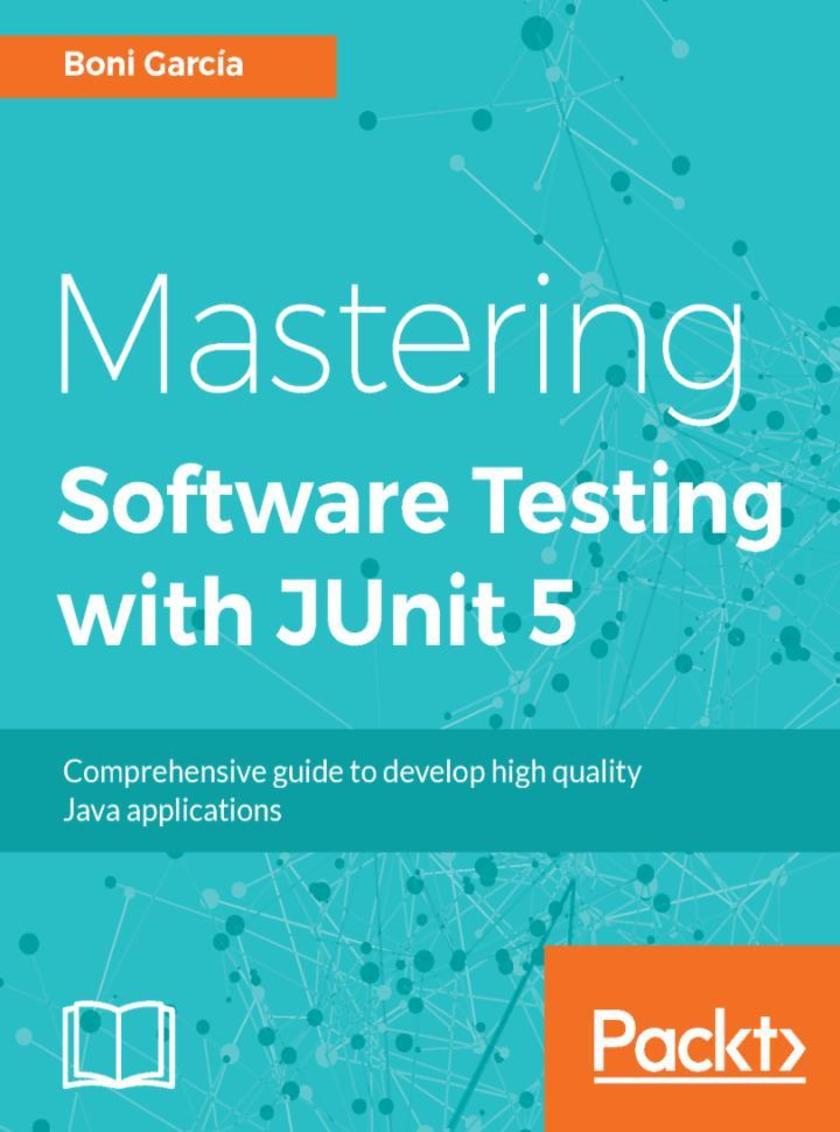
Mastering Software Testing with JUnit 5
¥80.65
A comprehensive, hands-on guide on unit testing framework for Java programming language About This Book ? In-depth coverage of Jupiter, the new programming and extension model provided by JUnit 5 ? Integration of JUnit 5 with other frameworks such as Mockito, Spring, Selenium, Cucumber, and Docker ? Best practices for writing meaningful Jupiter test cases Who This Book Is For This book is for Java software engineers and testers. If you are a Java developer who is keen on improving the quality of your code and building world class applications then this book is for you. Prior experience of the concepts of automated testing will be helpful. What You Will Learn ? The importance of software testing and its impact on software quality ? The options available for testing Java applications ? The architecture, features and extension model of JUnit 5 ? Writing test cases using the Jupiter programming model ? How to use the latest and advanced features of JUnit 5 ? Integrating JUnit 5 with existing third-party frameworks ? Best practices for writing meaningful JUnit 5 test cases ? Managing software testing activities in a living software project In Detail When building an application it is of utmost importance to have clean code, a productive environment and efficient systems in place. Having automated unit testing in place helps developers to achieve these goals. The JUnit testing framework is a popular choice among Java developers and has recently released a major version update with JUnit 5. This book shows you how to make use of the power of JUnit 5 to write better software. The book begins with an introduction to software quality and software testing. After that, you will see an in-depth analysis of all the features of Jupiter, the new programming and extension model provided by JUnit 5. You will learn how to integrate JUnit 5 with other frameworks such as Mockito, Spring, Selenium, Cucumber, and Docker. After the technical features of JUnit 5, the final part of this book will train you for the daily work of a software tester. You will learn best practices for writing meaningful tests. Finally, you will learn how software testing fits into the overall software development process, and sits alongside continuous integration, defect tracking, and test reporting. Style and approach The book offers definitive and comprehensive coverage of all the Unit testing concepts with JUnit and its features using several real world examples so that readers can put their learning to practice almost immediately. This book is structured in three parts: 1. Software testing foundations (software quality and Java testing) 2. JUnit 5 in depth (programming and extension model of JUnit 5) 3. Software testing in practice (how to write and manage JUnit 5 tests)
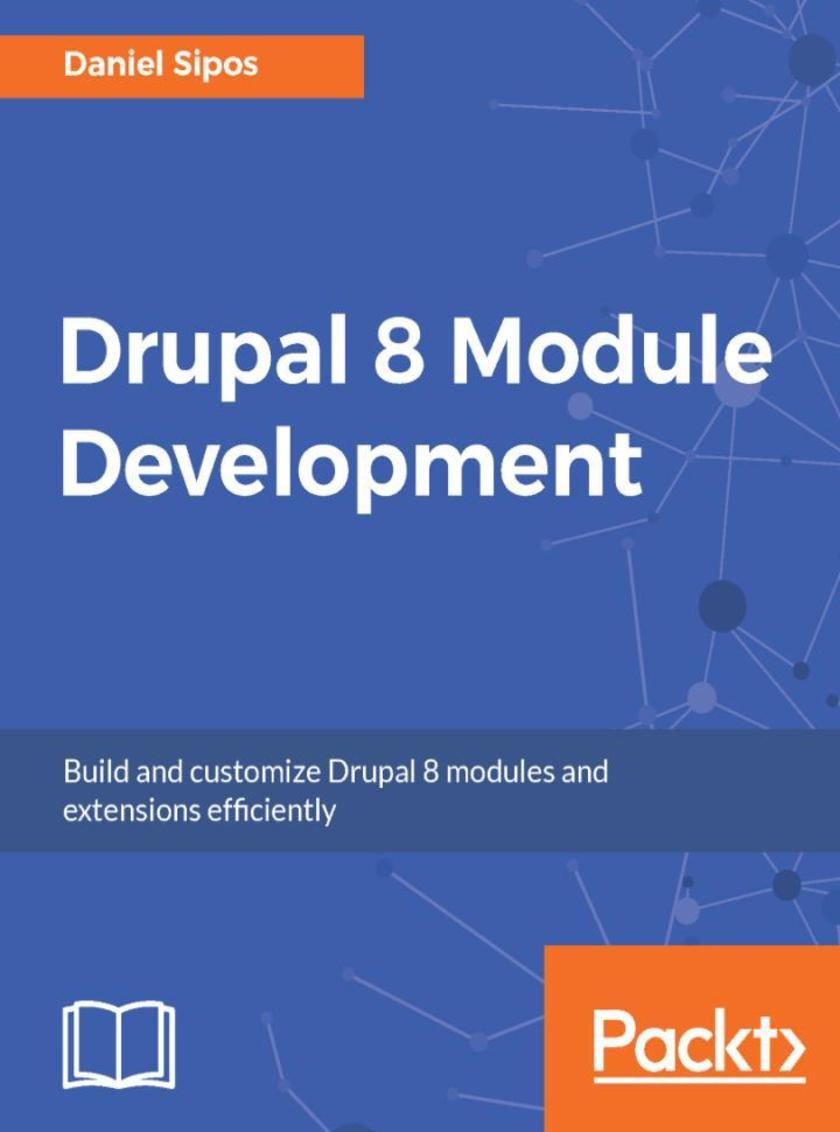
Drupal 8 Module Development
¥80.65
Learn to create and customize impressive Drupal 8 modules to extend your website's functionalities About This Book ? Unleash the power of Drupal 8 programming by creating efficient modules and extensions ? Explore a plethora of Drupal 8 APIs and get the best out of them using the power of PHP coding ? Learn to implement efficient data management and data security by creating dedicated modules for it. Who This Book Is For The primary target of this book is Drupal developers who want to learn how to write modules and carry out development in Drupal 8. It is also intended for Drupal site builders and PHP developers who have basic Object Oriented Programming skills. A little bit of Symfony experience is helpful but not mandatory. What You Will Learn ? Write a Drupal 8 module with custom functionality and hook into various extension points ? Master numerous Drupal 8 sub-systems and APIs ? Model, store, and manipulate data in various ways and for various purposes ? Display data and content in a presentable and secure way ? Learn about the theme system and render arrays In Detail Drupal is an open source web-based content management system (CMS) that can be used for building anything from simple websites to complex applications. It enables individuals and organizations to build platforms that engage users and deliver the right content at the right time. Drupal 8 is an exciting new development in the Drupal community. However, the differences from the previous version are substantial and this can put quite some pressure on Drupal 7 developers that need to catch up. This book aims to help such developers in getting up to speed with Drupal 8 module development. The book first introduces you to the Drupal 8 architecture and its subsystems before diving into creating your first module with basic functionality. Building upon that, you will cover many core APIs and functionalities available to module developers. You will work with the Drupal logging and mailing systems, learn how to output data using the theme layer and work with menus and links programmatically. Then, you will learn how to work with different kinds of data storages, create custom entities, field types and leverage the Database API for lower level database queries. Moreover, you will learn about the Drupal 8 access system and caching layer as well as the APIs used for data processing (queues and batches). You will further see how to introduce java* into your module, work with the various file systems and ensure the code you write works on multilingual sites. Finally, you will learn how to programmatically work with Views, write automated tests for your functionality and also write secure code in general. By the end of the book, you will have learned how to develop your own custom module from scratch that can help solve a small problem or even provide complex functionality. And who knows, maybe you’ll even contribute it back to the Drupal community. Style and approach This book aims to introduce PHP developers to programming concepts specific to Drupal 8 to get them started on writing their own functionality with Drupal 8 and create efficient Drupal 8 modules and extensions.

Microsoft HoloLens Developer’s Guide
¥80.65
Transform the ways you communicate, create, collaborate, and explore using Microsoft HoloLens About This Book ? Create immersive augmented reality apps for Microsoft HoloLens from scratch ? Leverage the powerful HoloLens sensors to interact with real-world motions and gestures and make your app life-like ? Explore the powerful Unity 5 SDK along with the Windows Unified platform to get the most out of your HoloLens app Who This Book Is For If you are a developer who wants to create augmented reality apps for the Microsoft HoloLens platform, then this is the book for you. Coding experience with C# is assumed. What You Will Learn ? Design an app for HoloLens that is feasible and attractive to use ? Add gestures and interact with them ? Create sounds in the app and place them in a 3D space ? Use voice generation and voice recognition to make your apps more lifelike ? Interact with the physical environment to place holograms on top of physical objects ? Compare HoloLens with the other products and know how to use its strengths ? Use assets from third parties to enrich our app In Detail HoloLens, Microsoft’s innovative augmented reality headset, overlaps holograms into a user’s vision of their environment. Your ideas are closer to becoming real when you can create and work with holograms in relation to the world around you. If you are dreaming beyond virtual worlds, beyond screens, beyond pixels, and want to take a big leap in the world of augmented reality, then this is the book you want. Starting off with brainstorming and the design process, you will take your first steps in creating your application for HoloLens. You will learn to add gestures and write an app that responds to verbal commands before gradually moving on creating sounds in the app and placing them in a 3D space. You will then communicate between devices in the boundaries of the UWP model. Style and approach This book takes a step-by-step, practical, tutorial-style approach where you will dive deep into HoloLens app development. You will work with the API and write your own complex *s that would interact with the powerful HoloLens sensors and with realistic examples, you will be able to create immersive 3D apps for HoloLens.

Digital Forensics and Incident Response
¥80.65
A practical guide to deploying digital forensic techniques in response to cyber security incidents About This Book ? Learn incident response fundamentals and create an effective incident response framework ? Master forensics investigation utilizing digital investigative techniques ? Contains real-life scenarios that effectively use threat intelligence and modeling techniques Who This Book Is For This book is targeted at Information Security professionals, forensics practitioners, and students with knowledge and experience in the use of software applications and basic command-line experience. It will also help professionals who are new to the incident response/digital forensics role within their organization. What You Will Learn ? Create and deploy incident response capabilities within your organization ? Build a solid foundation for acquiring and handling suitable evidence for later analysis ? Analyze collected evidence and determine the root cause of a security incident ? Learn to integrate digital forensic techniques and procedures into the overall incident response process ? Integrate threat intelligence in digital evidence analysis ? Prepare written documentation for use internally or with external parties such as regulators or law enforcement agencies In Detail Digital Forensics and Incident Response will guide you through the entire spectrum of tasks associated with incident response, starting with preparatory activities associated with creating an incident response plan and creating a digital forensics capability within your own organization. You will then begin a detailed examination of digital forensic techniques including acquiring evidence, examining volatile memory, hard drive assessment, and network-based evidence. You will also explore the role that threat intelligence plays in the incident response process. Finally, a detailed section on preparing reports will help you prepare a written report for use either internally or in a courtroom. By the end of the book, you will have mastered forensic techniques and incident response and you will have a solid foundation on which to increase your ability to investigate such incidents in your organization. Style and approach The book covers practical scenarios and examples in an enterprise setting to give you an understanding of how digital forensics integrates with the overall response to cyber security incidents. You will also learn the proper use of tools and techniques to investigate common cyber security incidents such as malware infestation, memory analysis, disk analysis, and network analysis.
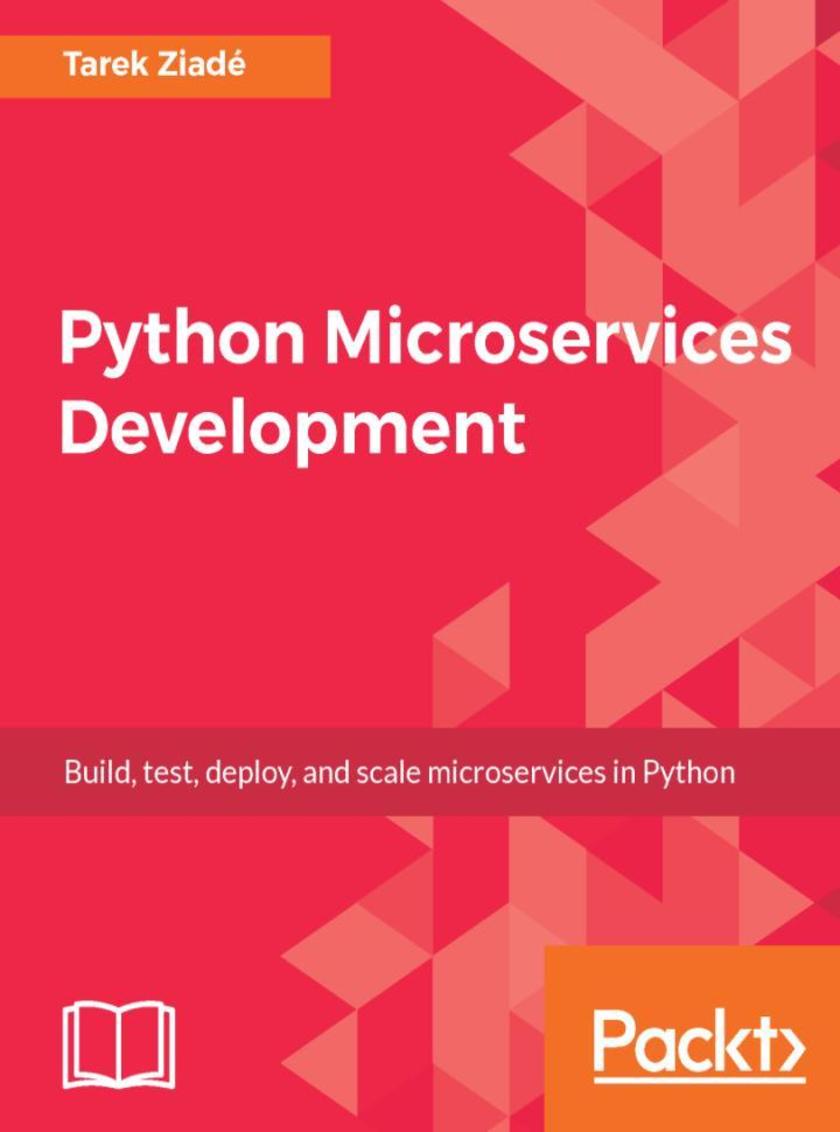
Python Microservices Development
¥80.65
A practical approach to conquering the complexities of Microservices using the Python tooling ecosystem About This Book ? A very useful guide for Python developers who are shifting to the new microservices-based development ? A concise, up-to-date guide to building efficient and lightweight microservices in Python using Flask, Tox, and other tools ? Learn to use Docker containers, CoreOS, and Amazon Web Services to deploy your services Who This Book Is For This book is for developers who have basic knowledge of Python, the command line, and HTTP-based application principles, and those who want to learn how to build, test, scale, and manage Python 3 microservices. No prior experience of writing microservices in Python is assumed. What You Will Learn ? Explore what microservices are and how to design them ? Use Python 3, Flask, Tox, and other tools to build your services using best practices ? Learn how to use a TDD approach ? Discover how to document your microservices ? Configure and package your code in the best way ? Interact with other services ? Secure, monitor, and scale your services ? Deploy your services in Docker containers, CoreOS, and Amazon Web Services In Detail We often deploy our web applications into the cloud, and our code needs to interact with many third-party services. An efficient way to build applications to do this is through microservices architecture. But, in practice, it's hard to get this right due to the complexity of all the pieces interacting with each other. This book will teach you how to overcome these issues and craft applications that are built as small standard units, using all the proven best practices and avoiding the usual traps. It's a practical book: you’ll build everything using Python 3 and its amazing tooling ecosystem. You will understand the principles of TDD and apply them. You will use Flask, Tox, and other tools to build your services using best practices. You will learn how to secure connections between services, and how to * Nginx using Lua to build web application firewall features such as rate limiting. You will also familiarize yourself with Docker’s role in microservices, and use Docker containers, CoreOS, and Amazon Web Services to deploy your services. This book will take you on a journey, ending with the creation of a complete Python application based on microservices. By the end of the book, you will be well versed with the fundamentals of building, designing, testing, and deploying your Python microservices. Style and approach This book is an linear, easy-to-follow guide on how to best design, write, test, and deploy your microservices. It includes real-world examples that will help Python developers create their own Python microservice using the most efficient methods.
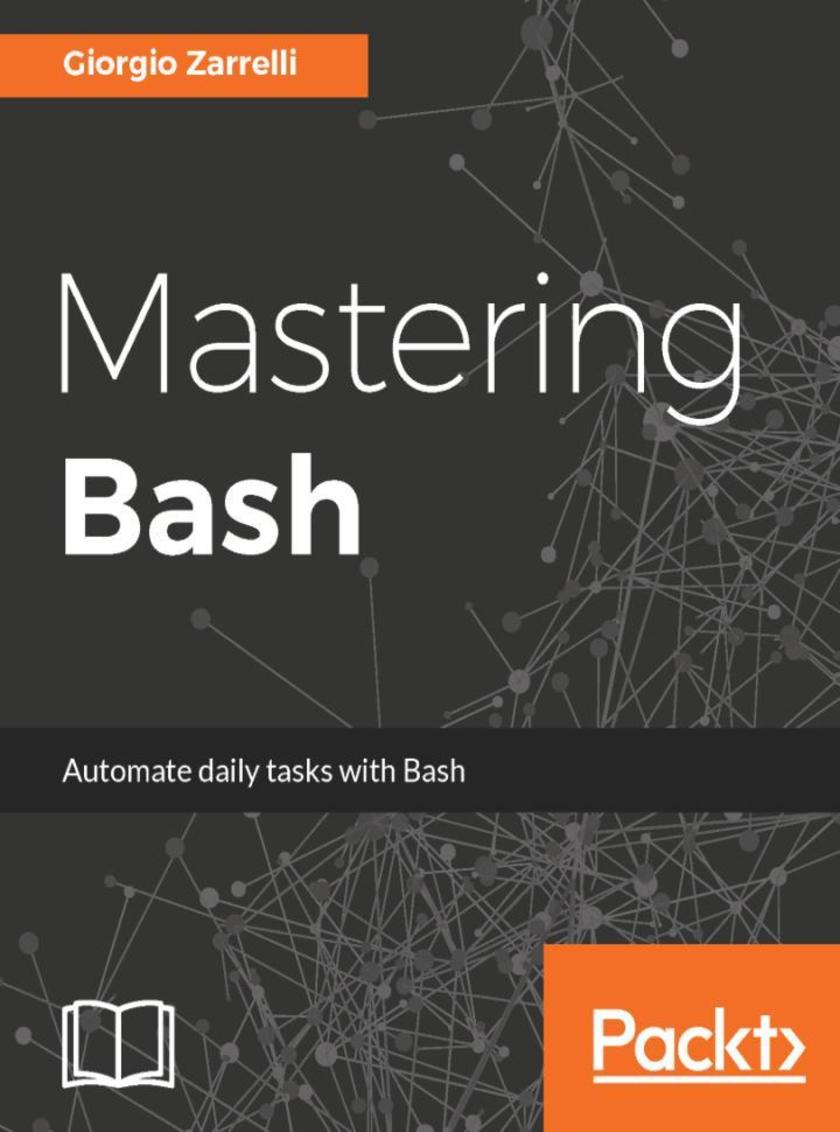
Mastering Bash
¥80.65
Your one stop guide to making the most out of Bash programming About This Book ? From roots to leaves, learn how to program in Bash and automate daily tasks, pouring some spice in your *s ? Daemonize a * and make a real service of it, ensuring it’s available at any time to process user-fed data or commands ? This book provides functional examples that show you practical applications of commands Who This Book Is For If you're a power user or system administrator involved in writing Bash *s to automate tasks, then this book is for you. This book is also ideal for advanced users who are engaged in complex daily tasks. What You Will Learn ? Understand Bash right from the basics and progress to an advanced level ? Customise your environment and automate system routine tasks ? Write structured *s and create a command-line interface for your *s ? Understand arrays, menus, and functions ? Securely execute remote commands using ssh ? Write Nagios plugins to automate your infrastructure checks ? Interact with web services, and a Slack notification * ? Find out how to execute subshells and take advantage of parallelism ? Explore inter-process communication and write your own daemon In Detail System administration is an everyday effort that involves a lot of tedious tasks, and devious pits. Knowing your environment is the key to unleashing the most powerful solution that will make your life easy as an administrator, and show you the path to new heights. Bash is your Swiss army knife to set up your working or home environment as you want, when you want. This book will enable you to customize your system step by step, making your own real, virtual, home out of it. The journey will take you swiftly through the basis of the shell programming in Bash to more interesting and challenging tasks. You will be introduced to one of the most famous open source monitoring systems—Nagios, and write complex programs with it in any languages. You’ll see how to perform checks on your sites and applications. Moving on, you’ll discover how to write your own daemons so you can create your services and take advantage of inter-process communication to let your *s talk to each other. So, despite these being everyday tasks, you’ll have a lot of fun on the way. By the end of the book, you will have gained advanced knowledge of Bash that will help you automate routine tasks and manage your systems. Style and approach This book presents step-by-step instructions and expert advice on working with Bash and writing *s. Starting from the basics, this book serves as a reference manual where you can find handy solutions and advice to make your *s flexible and powerful.
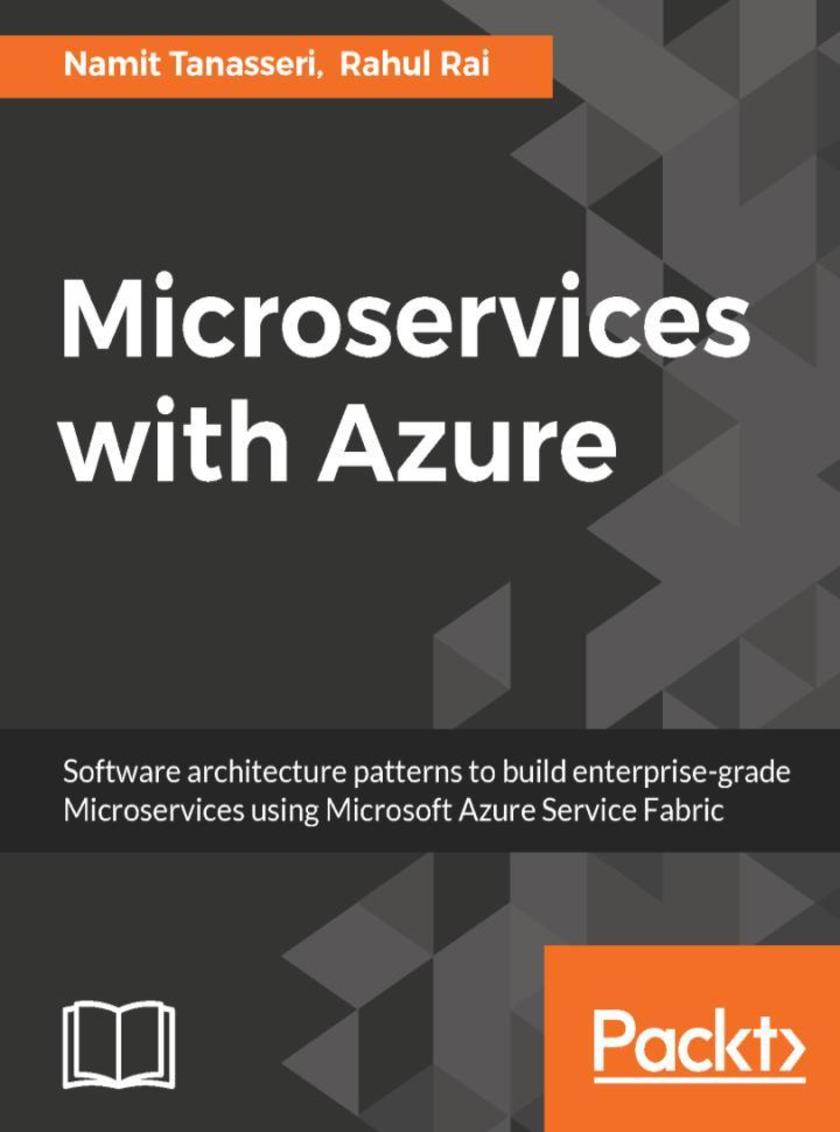
Microservices with Azure
¥80.65
Architect enterprise-grade, Microservice-based solutions using Microsoft Azure Service Fabric. About This Book ? Explore architectural patterns for building modern day Microservice-based systems ? Learn about Microsoft Service Fabric as a platform to host distributed Microservices ? Discover multiple options for hosting Microservices on heterogeneous, cross-platform environments ? Learn to configure Azure Service Fabric clusters for enterprise-grade service deployments Who This Book Is For The book is aimed at IT architects, system administrators, and DevOps engineers who have a basic knowledge of the Microsoft Azure platform and are working on, or are curious about, the concepts of Microservices and Microservice architecture. What You Will Learn ? Understand the basics of Microservices and how Microsoft Azure fits into the equation ? Master Azure Service Fabric architecture and services ? Explore Azure Service Fabric application programming models ? Comprehensive study of various architecture patterns for building enterprise-grade Microservices ? Manage and deploy Microservices on Azure Service Fabric ? An insight into the future of Microservices with containers and serverless computing In Detail Microsoft Azure is rapidly evolving and is widely used as a platform on which you can build Microservices that can be deployed on-premise and on-cloud heterogeneous environments through Microsoft Azure Service Fabric. This book will help you understand the concepts of Microservice application architecture and build highly maintainable and scalable enterprise-grade applications using the various services in Microsoft Azure Service Fabric. We will begin by understanding the intricacies of the Microservices architecture and its advantages over the monolithic architecture and Service Oriented Architecture (SOA) principles. We will present various scenarios where Microservices should be used and walk you through the architectures of Microservice-based applications. Next, you will take an in-depth look at Microsoft Azure Service Fabric, which is the best–in-class platform for building Microservices. You will explore how to develop and deploy sample applications on Microsoft Azure Service Fabric to gain a thorough understanding of it. Building Microservice-based application is complicated. Therefore, we will take you through several design patterns that solve the various challenges associated with realizing the Microservices architecture in enterprise applications. Each pattern will be clearly illustrated with examples that you can keep referring to when designing applications. Finally, you will be introduced to advanced topics such as Serverless computing and DevOps using Service Fabric, to help you undertake your next venture with confidence. Style and approach This book introduces its readers to the concept of Microservices and Microsoft Azure Service Fabric as a distributed platform to host enterprise-grade Microservices. It then addresses common architectural challenges associated with the Microservice architecture, using proven architectural patterns.
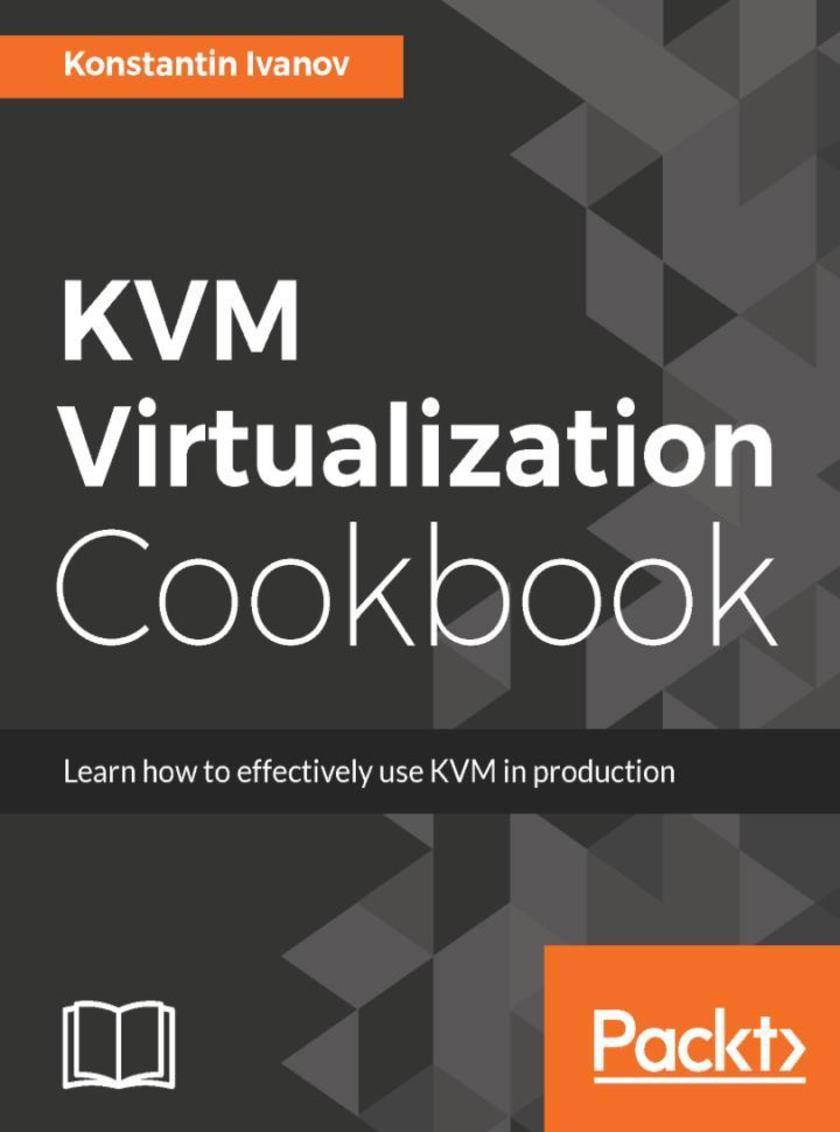
KVM Virtualization Cookbook
¥80.65
Deploy, manage, and scale virtual instances using Kernel-based Virtual Machines About This Book ? Build, manage and scale virtual machines with practical step-by-step examples ? Leverage the libvirt user-space tools and libraries to manage the life-cycle of KVM instances ? Deploy and scale applications inside KVM virtual machines with OpenStack Who This Book Is For If you are a system administrator working KVM virtualization, this book will help you grow on your expertise of working with the infrastructure to manage things in a better way. You should have a knowledge of working with Linux based systems. What You Will Learn ? Deploy different workloads in isolation with KVM virtualization and better utilize the available compute resources ? Explore the benefits of running applications with KVM and learn to prevent the “bad-neighbor” effect ? Leveraging various networking technologies in the context of virtualization with Open vSwitch and the Linux bridge. ? Create KVM instances using Python and inspect running KVM instances ? Understand Kernel Tuning for enhanced KVM performance and better memory utilization In Detail Virtualization technologies such as KVM allow for better control over the available server resources, by deploying multiple virtual instances on the same physical host, or clusters of compute resources. With KVM it is possible to run various workloads in isolation with the hypervisor layer providing better tenant isolation and higher degree of security. This book will provide a deep dive into deploying KVM virtual machines using qemu and libvirt and will demonstrate practical examples on how to run, scale, monitor, migrate and backup such instances. You will also discover real production ready recipes on deploying KVM instances with OpenStack and how to programatically manage the life cycle of KVM virtual machines using Python. You will learn numerous tips and techniques which will help you deploy & plan the KVM infrastructure. Next, you will be introduced to the working of libvirt libraries and the iPython development environment. Finally, you will be able to tune your Linux kernel for high throughput and better performance. By the end of this book, you will gain all the knowledge needed to be an expert in working with the KVM virtualization infrastructure. Style and approach This book takes a complete practical approach with many step-by-step example recipes on how to use KVM in production. The book assumes certain level of expertise with Linux systems and virtualization in general. Some knowledge of Python programming is encouraged, to fully take advantage of the code recipes.

Penetration Testing Bootcamp
¥80.65
Sharpen your pentesting skill in a bootcamp About This Book ? Get practical demonstrations with in-depth explanations of complex security-related problems ? Familiarize yourself with the most common web vulnerabilities ? Get step-by-step guidance on managing testing results and reporting Who This Book Is For This book is for IT security enthusiasts and administrators who want to understand penetration testing quickly. What You Will Learn ? Perform different attacks such as MiTM, and bypassing SSL encryption ? Crack passwords and wireless network keys with brute-forcing and wordlists ? Test web applications for vulnerabilities ? Use the Metasploit Framework to launch exploits and write your own Metasploit modules ? Recover lost files, investigate successful hacks, and discover hidden data ? Write organized and effective penetration testing reports In Detail Penetration Testing Bootcamp delivers practical, learning modules in manageable chunks. Each chapter is delivered in a day, and each day builds your competency in Penetration Testing. This book will begin by taking you through the basics and show you how to set up and maintain the C&C Server. You will also understand how to scan for vulnerabilities and Metasploit, learn how to setup connectivity to a C&C server and maintain that connectivity for your intelligence gathering as well as offsite processing. Using TCPDump filters, you will gain understanding of the sniffing and spoofing traffic. This book will also teach you the importance of clearing up the tracks you leave behind after the penetration test and will show you how to build a report from all the data obtained from the penetration test. In totality, this book will equip you with instructions through rigorous tasks, practical callouts, and assignments to reinforce your understanding of penetration testing. Style and approach This book is delivered in the form of a 10-day boot camp style book. The day-by-day approach will help you get to know everything about penetration testing, from the use of network reconnaissance tools, to the writing of custom zero-day buffer overflow exploits.
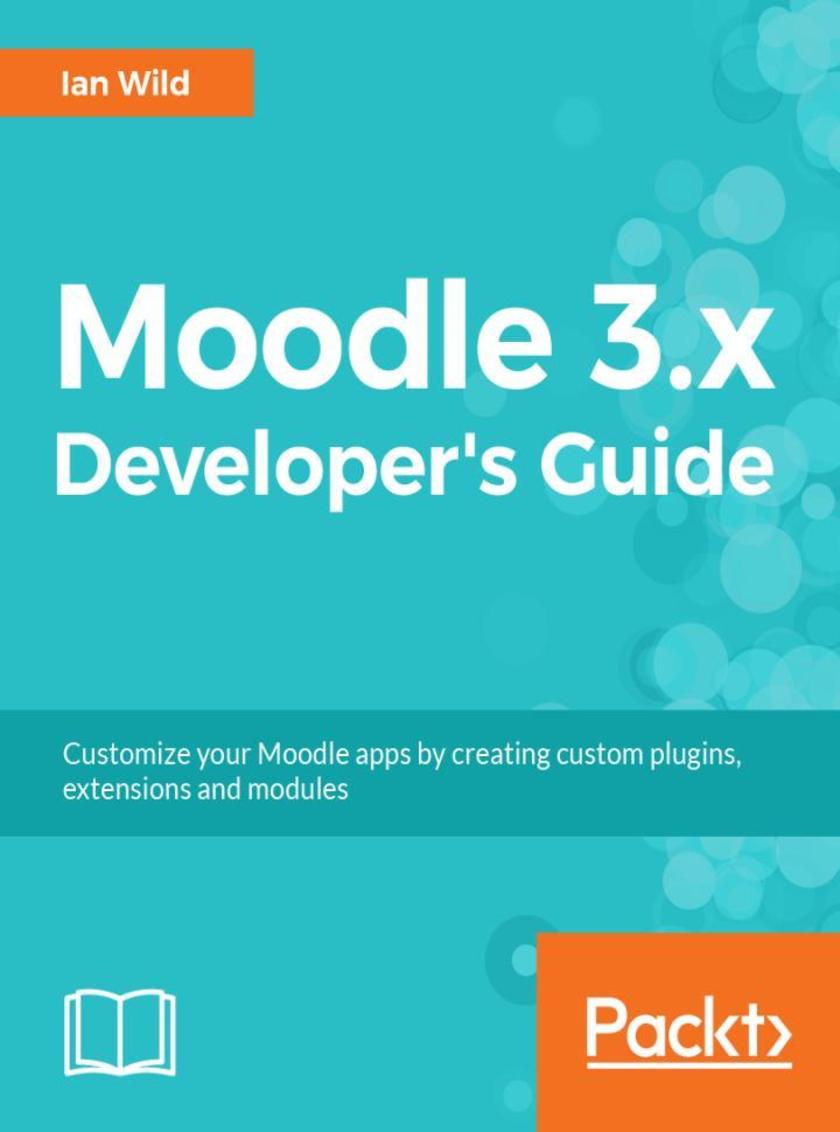
Moodle 3.x Developer's Guide
¥80.65
Effortlessly ensure your application's code quality from day 1 About This Book ? Customize your Moodle 3.x app. ? Leverage the new features of Moodle 3.x by diving deep into the Moodle development eco-system. ? Cater to heavy user traffic, customize learning requirements and create custom third party plugins. Who This Book Is For This book is for Moodle developers who are familiar with the basic Moodle functionality and have an understanding of the types of scenarios in which the Moodle platform can be usefully employed. You must have medium-level PHP programming knowledge. You should be familiar with HTML and XML protocols. You do not need to have prior knowledge of Moodle-specific terminology What You Will Learn ? Work with the different types of custom modules that can be written for Moodle 3.x ? Understand how to author custom modules so they conform to the agreed Moodle 3.x development guidelines ? Get familiar with the Moodle 3.x architecture—its internal and external APIs ? Customize Moodle 3.x so it can integrate seamlessly with third-party applications of any kind ? Build a new course format to specify the layout of a course ? Implement third-party graphics libraries in your plugins ? Build plugins that can be themed easily ? Provide custom APIs that will provide the means to automate Moodle 3 in real time In Detail The new and revamped Moodle is the top choice for developers to create cutting edge e-learning apps that cater to different user’s segments and are visually appealing as well. This book explains how the Moodle 3.x platform provides a framework that allows developers to create a customized e-learning solution. It begins with an exploration of the different types of plugin.. We then continue with an investigation of creating new courses. You will create a custom plugin that pulls in resources from a third-party repository. Then you’ll learn how users can be assigned to courses and granted the necessary permissions. Furthermore, you will develop a custom user home. At the end of the book, we’ll discuss the Web Services API to fully automate Moodle 3.x in real time. Style and approach This book takes a step-by-step practical approach with every step explained in great detail using practical examples. You will create custom plugins from scratch with the examples shown and create new modules as well as extensions with the examples presented.
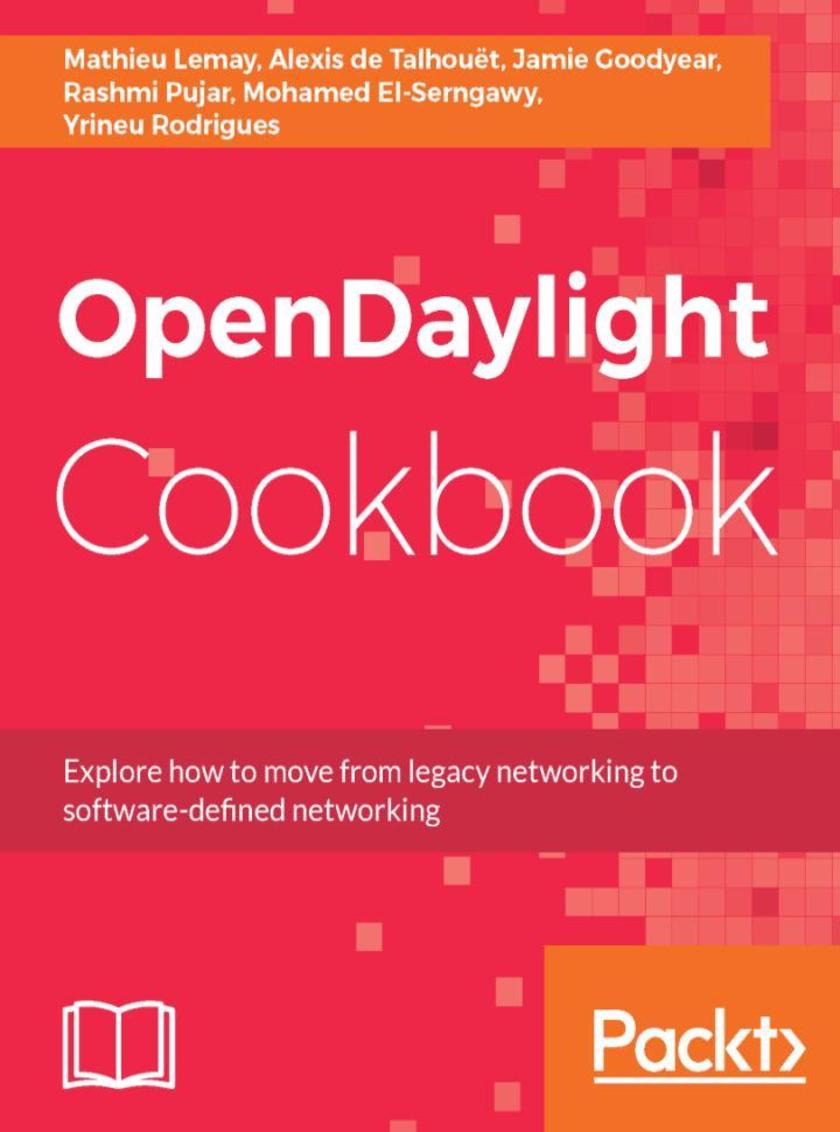
OpenDaylight Cookbook
¥80.65
Over 90 recipes to gain the critical skills needed to deploy and manage OpenDaylight-based solutions About This Book ? This book will help you to build intelligent SDN networks that save your company time, money, and resources ? From eminent authors, learn to address real-world challenges and troubleshoot day-to-day scalability and performance problems faced in OpenDayLight deployments ? This is the only book that offers you quick fixes to create your own branded OpenDaylight Who This Book Is For This book is for experienced network administrators and IT professionals who are using or deploying SDN/OpenDaylight and are looking to gain expertise in building SDN solutions for organizations. What You Will Learn ? Grasp the fundamentals of OpenDaylight ? Customize, authenticate, & authorize in OpenDaylight ? Analyse network access control and policy ? Manage datacenter optimization ? Integrate OpenDaylight with third-party frameworks ? Deploy, configure, and tune OpenDaylight-based solutions In Detail OpenDaylight is an open source platform to program and build Software-Defined Networks (SDN). Its aim is to accelerate the adoption of SDN and NFV. With above 90 practical recipes, this book will help you to solve day-to-day problems and maintenance tasks surrounding OpenDaylight’s implementation. This book starts with the OpenDaylight fundamentals. In this book, you will gain a sound understanding of the methods and techniques when deploying OpenDaylight in production environment. Later on, you will learn to create a Service Chain using SFC. This book will address common problems and day-to-day maintenance tasks with OpenDaylight. We’ll also will teach you how to interact with OpenDaylight APIs and use the necessary tools to simulate networks. You will also explore how to create your own branded OpenDaylight along with authorising and authenticating users using OpenDaylight Identity Manager. By the end of this book, you will have the necessary skills to operate an OpenDaylight SDN environment. Style and approach With a diverse range of topics, this will be a guide which will help the readers gain the necessary skills needed to deploy and operate OpenDaylight in your organisation through practical recipes.
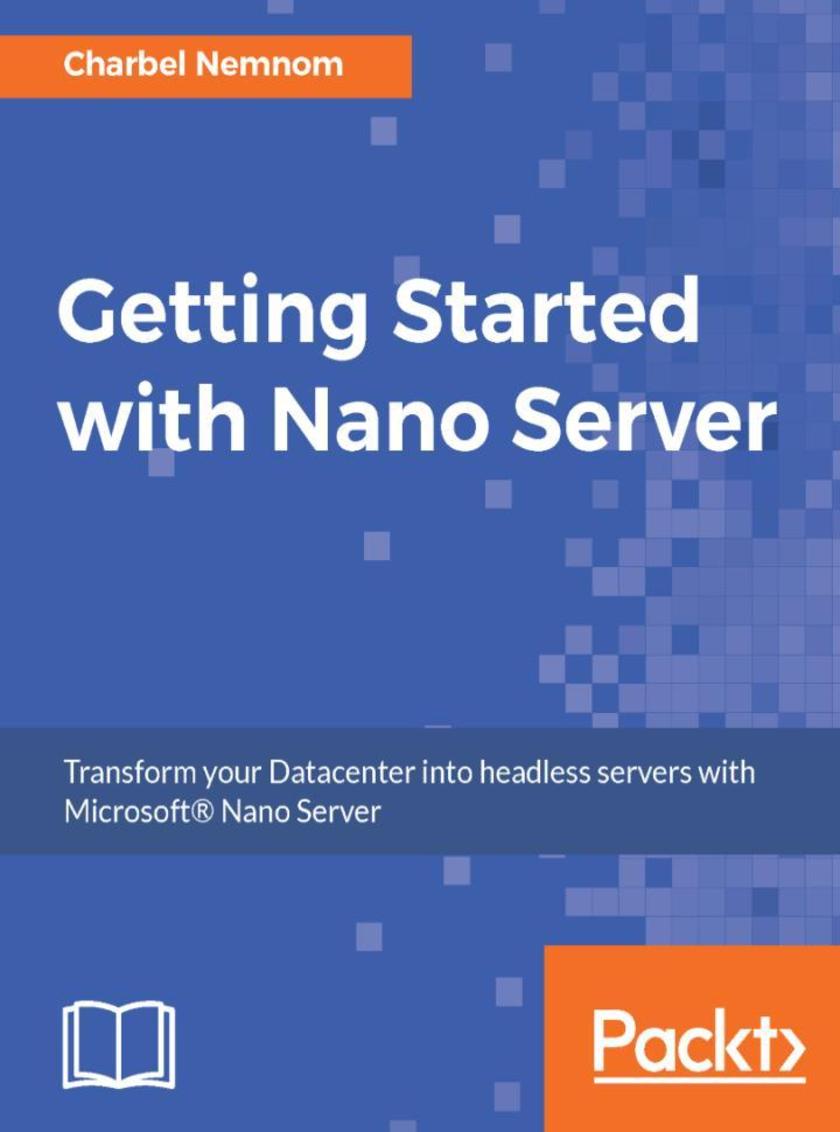
Getting Started with Nano Server
¥80.65
Remain highly competitive in the server and VM market by gaining the practical skills needed to operate Nano Server About This Book ? The days of the local server are numbered, and this book will make you an ace by giving you the skills needed to administer Nano Server and survive in the brave new server world ? Learn to quickly automate multiple VMs and support Hyper-V clusters, all through small footprints from a single host ? Apply up-to-date, real-world examples presented in this book and improve the scalability and efficiency of large-scale VM deployments Who This Book Is For This book opens up new potential for both developers and IT pros alike. The book is primarily for Server administrators and IT Professionals who would like to deploy and administer Nano Server within their organizations, and for developers who are trying to make maximal use of Server Containers and Hyper-V Containers with Nano Servers. What You Will Learn ? Understand Nano Server ? Deploy Nano Server ? Deploy Hyper-V Clusters on Nano Server ? Deploy Nano Server with SCVMM ? Manage Nano Server using PowerShell and Remote Server Management Tools ? Manage Nano Server with third-party tools ? Run Server Containers and Hyper-V Containers on Nano Server ? Troubleshoot Nano Server ? Validate developed applications that run on Nano Server In Detail Nano Server allows developers and operations teams to work closely together and use containers that package applications so that the entire platform works as one. The aim of Nano Server is to help applications run the way they are intended to. It can be used to run and deploy infrastructures (acting as a compute host, storage host, container, or VM guest operating system) without consuming significant resources. Although Nano Server isn't intended to replace Server 2016 or 2012 R2, it will be an attractive choice for developers and IT teams. Want to improve your ability to deploy a new VM and install and deploy container apps within minutes? You have come to the right place! The objective of this book is to get you started with Nano Server successfully. The journey is quite exciting, since we are introducing you to a cutting-edge technology that will revolutionize today's datacenters. We'll cover everything from the basic to advanced topics. You'll discover a lot of added value from using Nano Server, such as hundreds of VM types on a single host through a small footprint, which could be a big plus for you and your company. After reading this book, you will have the necessary skills to start your journey effectively using Nano Server. Style and approach Gauge all the information needed to get up-and-running with the latest Nano Server built by Microsoft using this easy to follow step-by-step guide.

Bootstrap 4 Cookbook
¥80.65
Take your Bootstrap game to the next level with this practical guide About This Book ? Packed with easy-to-follow recipes on building responsive web pages with Bootstrap 4 that can be applied to a web project of your choice ? Build intuitive user interfaces that are mobile-ready with the latest features offered by BS4 ? Stay on top of the changes that Bootstrap 4 brings to front-end development ? Craft beautiful UIs and learn best practices, tips and tricks for quick, effortless, and proper Bootstrap 4 development Who This Book Is For If you are a web designer or a developer who is familiar with the basics of Bootstrap and now want to build highly responsive and professional web pages using Bootstrap 4, this cookbook is for you. Familiarity with the fundamentals of HTML, CSS and jQuery, and some experience of incorporating JavaScript plugins is assumed. What You Will Learn ? Craft beautiful UIs the right way ? Use jQuery and JavaScript to extend Bootstrap layouts ? Become more efficient by speeding up your workflow to achieve amazing results in the shortest time possible ? Setup your environment for future changes of the framework. ? Stay DRY by quickly prototyping Bootstrap-based websites with the help of Github’s own serverless blogging platform, Jekyll ? Integrate Bootstrap with the most popular JS frameworks, Angular and React ? Combine Bootstrap with the .NET platform In Detail Bootstrap, one of the most popular front-end frameworks, is perfectly built to design elegant, powerful, and responsive interfaces for professional-level web pages. It supports responsive design by dynamically adjusting your web page layout. Bootstrap 4 is a major update with many impressive changes that greatly enhance the end results produced by Bootstrap. This cookbook is a collection of great recipes that show you how to use all the latest features of Bootstrap to build compelling UIs. This book is using the most up-to-date version of Bootstrap 4 in all its chapters. First off, you will be shown how you can leverage the latest core features of Bootstrap 4 to create stunning web pages and responsive media. You will gradually move on to extending Bootstrap 4 with the help of plugins to build highly customized and powerful UIs. By the end of this book, you will know how to leverage, extend, and integrate bootstrap to achieve optimal results for your web projects. Style and approach Packed full of solutions that can be instantly applied, the practical-based recipes will help you get the most from Bootstrap.
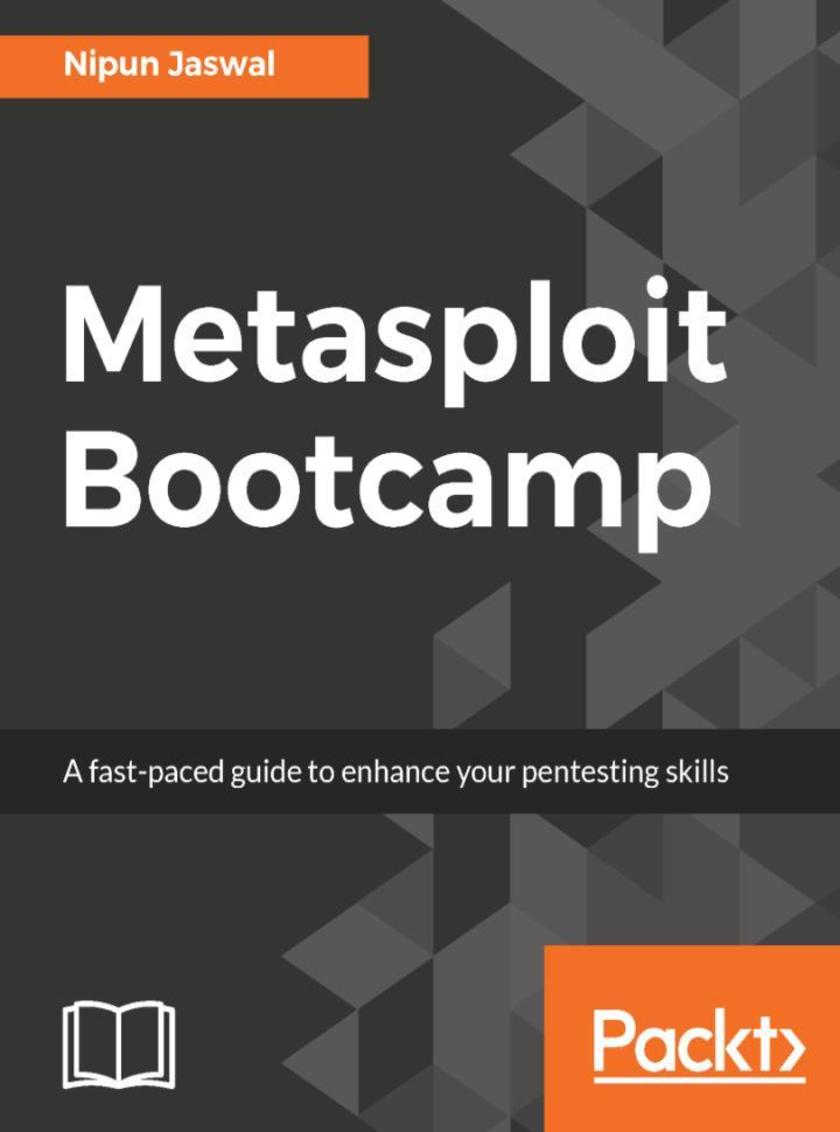
Metasploit Bootcamp
¥80.65
Master the art of penetration testing with Metasploit Framework in 7 days About This Book ? A fast-paced guide that will quickly enhance your penetration testing skills in just 7 days ? Carry out penetration testing in complex and highly-secured environments. ? Learn techniques to Integrate Metasploit with industry’s leading tools Who This Book Is For If you are a penetration tester, ethical hacker, or security consultant who quickly wants to master the Metasploit framework and carry out advanced penetration testing in highly secured environments then, this book is for you. What You Will Learn ? Get hands-on knowledge of Metasploit ? Perform penetration testing on services like Databases, VOIP and much more ? Understand how to Customize Metasploit modules and modify existing exploits ? Write simple yet powerful Metasploit automation *s ? Explore steps involved in post-exploitation on Android and mobile platforms. In Detail The book starts with a hands-on Day 1 chapter, covering the basics of the Metasploit framework and preparing the readers for a self-completion exercise at the end of every chapter. The Day 2 chapter dives deep into the use of scanning and fingerprinting services with Metasploit while helping the readers to modify existing modules according to their needs. Following on from the previous chapter, Day 3 will focus on exploiting various types of service and client-side exploitation while Day 4 will focus on post-exploitation, and writing quick *s that helps with gathering the required information from the exploited systems. The Day 5 chapter presents the reader with the techniques involved in scanning and exploiting various services, such as databases, mobile devices, and VOIP. The Day 6 chapter prepares the reader to speed up and integrate Metasploit with leading industry tools for penetration testing. Finally, Day 7 brings in sophisticated attack vectors and challenges based on the user’s preparation over the past six days and ends with a Metasploit challenge to solve. Style and approach This book is all about fast and intensive learning. That means we don’t waste time in helping readers get started. The new content is basically about filling in with highly-effective examples to build new things, show solving problems in newer and unseen ways, and solve real-world examples.

PHP 7 Data Structures and Algorithms
¥80.65
Increase your productivity by implementing data structures About This Book ? Gain a complete understanding of data structures using a simple approach ? Analyze algorithms and learn when you should apply each solution ? Explore the true potential of functional data structures Who This Book Is For This book is for those who want to learn data structures and algorithms with PHP for better control over application-solution, efficiency, and optimization. A basic understanding of PHP data types, control structures, and other basic features is required What You Will Learn ? Gain a better understanding of PHP arrays as a basic data structure and their hidden power ? Grasp how to analyze algorithms and the Big O Notation ? Implement linked lists, double linked lists, stack, queues, and priority queues using PHP ? Work with sorting, searching, and recursive algorithms ? Make use of greedy, dynamic, and pattern matching algorithms ? Implement tree, heaps, and graph algorithms ? Apply PHP functional data structures and built-in data structures and algorithms In Detail PHP has always been the the go-to language for web based application development, but there are materials and resources you can refer to to see how it works. Data structures and algorithms help you to code and execute them effectively, cutting down on processing time significantly. If you want to explore data structures and algorithms in a practical way with real-life projects, then this book is for you. The book begins by introducing you to data structures and algorithms and how to solve a problem from beginning to end using them. Once you are well aware of the basics, it covers the core aspects like arrays, listed lists, stacks and queues. It will take you through several methods of finding efficient algorithms and show you which ones you should implement in each scenario. In addition to this, you will explore the possibilities of functional data structures using PHP and go through advanced algorithms and graphs as well as dynamic programming. By the end, you will be confident enough to tackle both basic and advanced data structures, understand how they work, and know when to use them in your day-to-day work Style and approach An easy-to-follow guide full of examples of implementation of data structures and real world examples to solve the problems faced. Each topic is first explained in general terms and then implemented using step by step explanation so that developers can understand each part of the discussion without any problem.
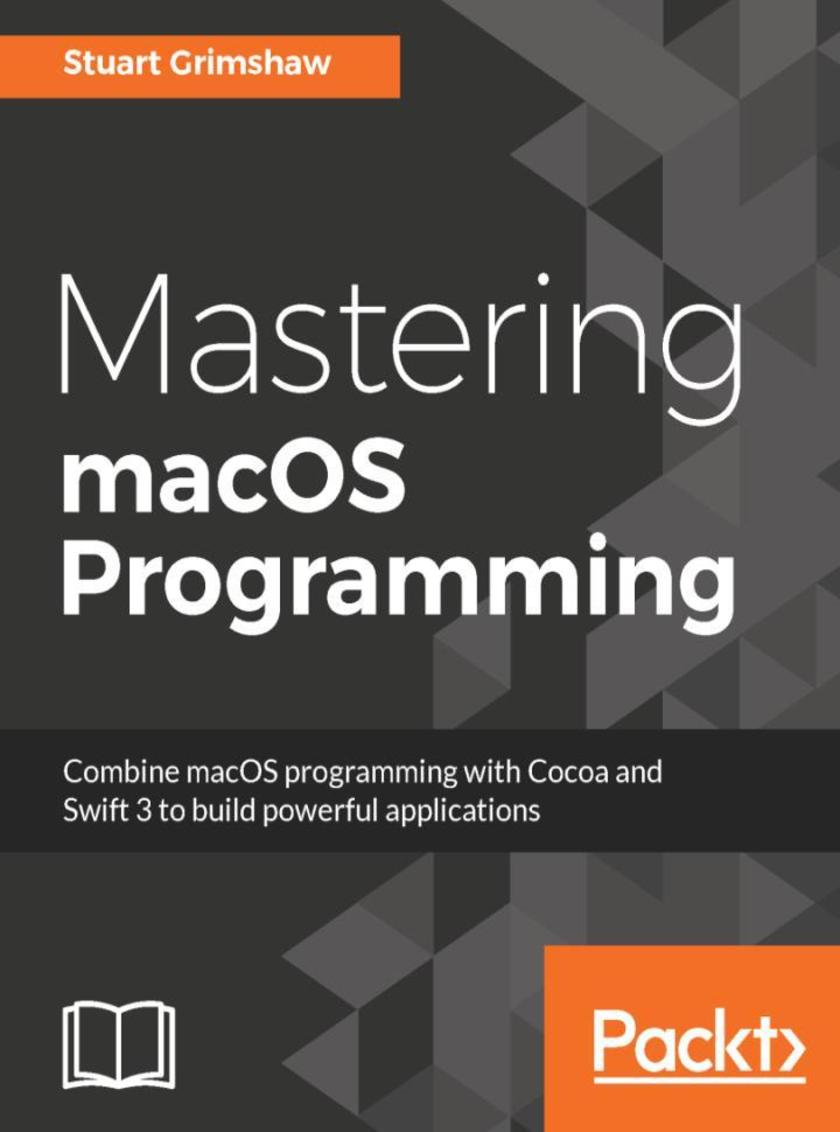
Mastering macOS Programming
¥80.65
Take your macOS Sierra to the next level using the latest tools, designs, and best coding practices while developing with Swift 3.0 About This Book ? Learn to harness the power of macOS with the elegance of the Swift programming language ? Become highly competent in building apps on the macOS platform ? Get the most in-depth guide with a hands-on approach on the latest version of macOS Who This Book Is For This book is for developers who have some experience with macOS and want to take their skills to next level by unlocking the full potential of latest version of macOS with Swift 3 to build impressive applications. Basic knowledge of Swift will be beneficial but is not required. What You Will Learn ? Combine beautiful design with robust code for the very best user experience ? Bring the best coding practices to the new macOS Sierra ? See what's new in Swift 3.0 and how best to leverage the Swift language ? Master Apple's tools, including Xcode, Interface Builder, and Instruments ? Use Unix and other common command-line tools to increase productivity ? Explore the essential Cocoa frameworks, including networking, animation, audio, and video In Detail macOS continues to lead the way in desktop operating systems, with its tight integration across the Apple ecosystem of platforms and devices. With this book, you will get an in-depth knowledge of working on macOS, enabling you to unleash the full potential of the latest version using Swift 3 to build applications. This book will help you broaden your horizons by taking your programming skills to next level. The initial chapters will show you all about the environment that surrounds a developer at the start of a project. It introduces you to the new features that Swift 3 and Xcode 8 offers and also covers the common design patterns that you need to know for planning anything more than trivial projects. You will then learn the advanced Swift programming concepts, including memory management, generics, protocol orientated and functional programming and with this knowledge you will be able to tackle the next several chapters that deal with Apple's own Cocoa frameworks. It also covers AppKit, Foundation, and Core Data in detail which is a part of the Cocoa umbrella framework. The rest of the book will cover the challenges posed by asynchronous programming, error handling, debugging, and many other areas that are an indispensable part of producing software in a professional environment. By the end of this book, you will be well acquainted with Swift, Cocoa, and AppKit, as well as a plethora of other essential tools, and you will be ready to tackle much more complex and advanced software projects. Style and approach This comprehensive guide takes a hands-on practical approach incorporating a visually-rich format rather than a text heavy format. The focus is on teaching the core concepts through a series of small projects and standalone examples so you gain expertise with various aspects of macOS application development.
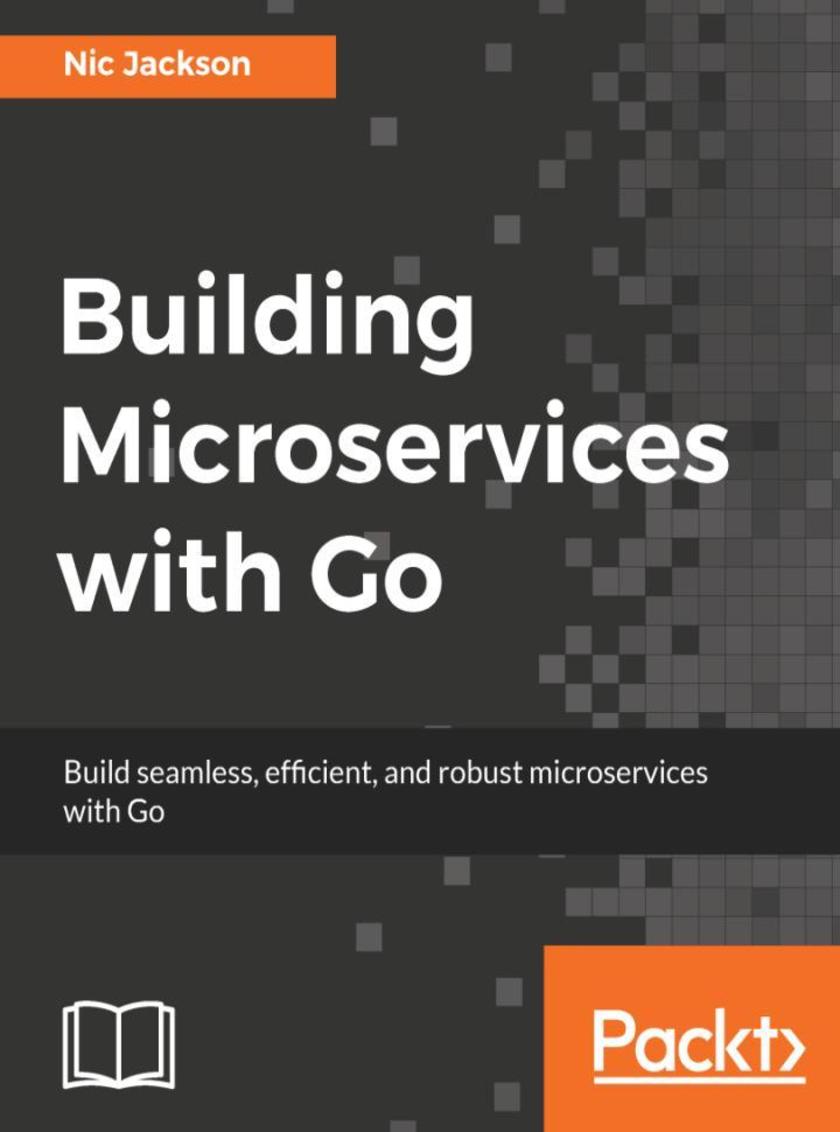
Building Microservices with Go
¥80.65
Your one-stop guide to the common patterns and practices, showing you how to apply these using the Go programming language About This Book ? This short, concise, and practical guide is packed with real-world examples of building microservices with Go ? It is easy to read and will benefit smaller teams who want to extend the functionality of their existing systems ? Using this practical approach will save your money in terms of maintaining a monolithic architecture and demonstrate capabilities in ease of use Who This Book Is For You should have a working knowledge of programming in Go, including writing and compiling basic applications. However, no knowledge of RESTful architecture, microservices, or web services is expected. If you are looking to apply techniques to your own projects, taking your first steps into microservice architecture, this book is for you. What You Will Learn ? Plan a microservice architecture and design a microservice ? Write a microservice with a RESTful API and a database ? Understand the common idioms and common patterns in microservices architecture ? Leverage tools and automation that helps microservices become horizontally scalable ? Get a grounding in containerization with Docker and Docker-Compose, which will greatly accelerate your development lifecycle ? Manage and secure Microservices at scale with monitoring, logging, service discovery, and automation ? Test microservices and integrate API tests in Go In Detail Microservice architecture is sweeping the world as the de facto pattern to build web-based applications. Golang is a language particularly well suited to building them. Its strong community, encouragement of idiomatic style, and statically-linked binary artifacts make integrating it with other technologies and managing microservices at scale consistent and intuitive. This book will teach you the common patterns and practices, showing you how to apply these using the Go programming language. It will teach you the fundamental concepts of architectural design and RESTful communication, and show you patterns that provide manageable code that is supportable in development and at scale in production. We will provide you with examples on how to put these concepts and patterns into practice with Go. Whether you are planning a new application or working in an existing monolith, this book will explain and illustrate with practical examples how teams of all sizes can start solving problems with microservices. It will help you understand Docker and Docker-Compose and how it can be used to isolate microservice dependencies and build environments. We finish off by showing you various techniques to monitor, test, and secure your microservices. By the end, you will know the benefits of system resilience of a microservice and the advantages of Go stack. Style and approach The step-by-step tutorial focuses on building microservices. Each chapter expands upon the previous one, teaching you the main skills and techniques required to be a successful microservice practitioner.




 购物车
购物车 个人中心
个人中心



